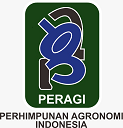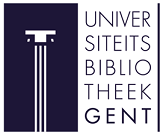POTENTIAL OF LOSS OF ORGANIC FERTILIZER IN LOWLAND RICE FARMING IN KLUNGKUNG DISTRICT, BALI
Abstract
Rice straw is an abundant resource that was still seen as a waste in intensive rice cultivation. Rice straw is said to be a resource because it can be used as organic fertilizer (compost) and contains nutrients that were beneficial for crop growth and soil fertility. The fact in the field was still found that rice straw was wasted, one of which was burned. A study was conducted through a method of observation and survey involving rice paddy farmers in 3 sub-districts in the district of Klungkung, namely Banjarangkan, Klungkung and Dawan. The aim of the research was to know the production of rice straw waste and the potential of wasted organic fertilizer in intensive rice cultivation. Based on the results obtained the production of dried straw waste in each harvest about 10.21 tons/ha. Farmers do not utilize rice straw as compost by reason, not knowing how to composting. There were 30.34% of farmers who burn straw because based on the knowledge gained burn is an easy way to restore rice straw to the ground. The impact of burning rice straw was around 5,887,086 - 7,888.7 tons of organic fertilizer wasted.
Keywords
Full Text:
PDFReferences
Adam, J. (2013). Alternatives to Open-Field Burning on Paddy Farms. Options, 18, 1-5.
Afriani, H., Dianita, R., & Idris, N. (2013). Optimalisasi Pemanfaatan Limbah Pertanian Melalui Pembuatan Kompos dan Silase Pada Kelompok Peternak Sapi dan Kelompok Wanita Petani Holtikultura. Jurnal Pengabdian Pada Masyarakat, 55 (1), 21-25.
Arikunto. S. (2010). Prosedur Penelitian : Suatu Pendekatan Praktik, Edisi Revisi. Cetakan 14, Rineka Cipta, Jakarta.
Binod, P., Sindhu, R., Singhania, R.R., Vikram, S., Devi, L., Nagalakshmi, S., Kurien, N., Sukumaran, R.K., & Pandey, A. (2010). Bioethanol production from rice straw : An Overview. Bioresource Technology, 101, 4767-4774.
BPS Bali. (2017). Provinsi Bali Dalam Angka 2017. BPS Provinsi Bali. No. Publikasi: 51560.1705, 205-233.
Chang, C.H., Liu, C.C., & Tseng, P.Y. (2013). Emissions Inventory for Rice Straw Open Burning in Taiwan Based on Burned Area Classification and Mapping Using Formosat-2 Satellite Imagery. Aerosol and Air Quality Research, 13, 474-487.
Dakshene, M., Rani, A., & Sharma, P.D. (2013). International Journal of Chemical Studies. International Journal of Chemical Studies, 1(4), 114-120.
Dobermann, A., & Fairhurst, T.H. (2002). Rice Straw Management. Better Crops International, 16, 7-11.
Fatmawati. 2005. Komposisi Kimia Fraksi Jerami Padi (Daun, Pelepah dan Batang). Skripsi. Fakultas Peternakan Universitas Andalas, Padang.
Golabi, M.H., Denney, M.J., & Iyekar, C. (2004). Use of Composted Organic Wastes As Alternative to Synthetic Fertilizers for Enhancing Crop Productivity and Agricultural Sustainability on The Tropical Island of Guam.
Gustiani, E., Nurhati, I., & Haryati, Y. (2014). Pemanfaatan Limbah Pertanian Sebagai Pakan Ternak Dalam Sistem Usahatani Tanaman Ternak. Balai Pengkajian Teknologi Pertanian Jawa Barat. Lokakarya Nasional Pengembangan Jejaring Litkaji Sistem Integrasi Tanaman-Ternak, 51-54.
Kanokkanjana, K., & Garivait, S. (2013). Alternative Rice Straw Management Practices to Reduce Field Open Burning in Thailand. International Journal of Environmental Science and Development, 4 (2), 119-123.
Kumari, A., Kapoor, K.K., Kundu, B.S., & Mehta, R.K. (2008). Identification of organic acids produced during rice straw decomposition and their role in rock phosphate solubilization. Plant, Soil and Environment, 54 (2), 72-77.
Latan, H. (2014). Aplikasi Analisis Data Statistik untuk Ilmu Sosial Sains Dengan STATA. Cetakan Kesatu. Penerbit Alfabeta, Bandung.
Mandal, K.G., Misra, A.K., Hati, K.M., Bandyopadhyay, K.K., Ghosh, P.K., & Mohanty, M. (2004). Rice residue- management options and effects on soil properties and crop productivity. Food, Agriculture & Environment, 2 (1), 224-231.
Oladosu, Y., Rafii, M.Y., Norhani, A., Magaji, U., Hussin, G., Ramli, A., & Miah, G. (2016). Fermentation Quality and Additives: A Case of Rice Straw Silage. Biomed Research International, 2016, 1-14.
Pavithira, E., Sirisena, D. N., & Herath, H. M. S. K. (2017). Effect of Potassium Fertilizer Split Applications together with Straw on Optimum Level in Leaf and Stem of Rice. The Journal of Agricultural Sciences, 12 (1), 24-33.
Purba, J.H., Wahyuni, P.S., Zulkarnaen, Sasmita, N., Yuniti IG.D., Pandawani, N.P. 2020. Growth and yield response of shallot (Allium ascalonicum L. var. Tuktuk) from different source materials applied with liquid biofertilizers. Nusantara Bioscience, Vol. 12 No. 2: 127-133.
Purba, J. H., Parmila, I. P., & Sari, K. K. (2018). Pengaruh Pupuk Kandang Sapi dan Jarak Tanam terhadap Pertumbuhan dan Hasil Kedelai (Glycine max L. Merrill) Varietas Edamame. Agro Bali: Agricultural Journal, Vol. 1 No.2: 69–81.
Ragályi, P., Rékási, M., Lonţariš, Z., Kovaţeviš, V. 2009. Composted slaughterhouse waste as organic ertilizer. Proceedings of the 44th Croatian & 4th International Symposium on Agriculture, Croatia, 16-20 February 2009.
Rosmiza, M.Z., Davies, W.P., Rosniza, A.C.R., Mazdi, M., Jabil, M.J., Wan-Toren, W.Y., & Che Rosmawati, C.M. (2014a). Farmers’ Participation in Rice Straw-Utilisation in the MADA Region of Kedah, Malaysia. Mediterranean Journal of Social Sciences, 5 (23), 229-237.
Rosmiza, M.Z., Davies, W.P., Rosniza, A. C.R., Mazdi, M., & Jabil, M.J. (2014b). Farmers’ Knowledge on Potential Uses of Rice Straw: An assessment in MADA and Sekinchan, Malaysia. Malaysian Journal of Society and Space, 10 (5), 30-43.
Sardjono, N., Susilo, B., & Wignyanto. (2012). Strategi Pengembangan Sistem Produksi Pupuk Organik Pada Unit Pengolahan Pupuk Organik (Uppo) di Desa Bangunsari Kabupaten Ciamis. Jurnal Teknologi Pertanian, 13 (2), 138-148.
Setiyaningrum, A. A., A. Darmawati, & S. Budiyanto. (2019). Pertumbuhan dan produksi tanaman kailan (Brassica oleracea) akibat pemberian mulsa jerami padi dengan takaran yang berbeda. J. Agro Complex 3(1):75-83, February 2019.
Sugiyono. (2016). Metode Penelitian Kuantitatif, Kualitatif dan R&D. Alfabet. Bandung.
Sutrisno, B. (2014).“Optimasi Dosis Pupuk Organik Yang Diaplikasikan Dengan Pupuk Hayati Pada Budidaya Padi Organik” (Skripsi).Bogor : Institut Pertanian Bogor.
Umadevi, M., Pushpa, R., Sampathkumar, K.P., & Bhowmik, D. (2012). Rice-Traditional Medicinal Plant in India. Journal of Pharmacognosy and Phytochemistry, 1 (1), 6-12.
Wang, Y., & McAllister, T.A. (2002). Rumen Microbes, Enzymes and Feed Digestion-A Review. Asian-Australasian Journal of Animal Sciences, 15 (11), 1659-1676.
Refbacks
- There are currently no refbacks.


























